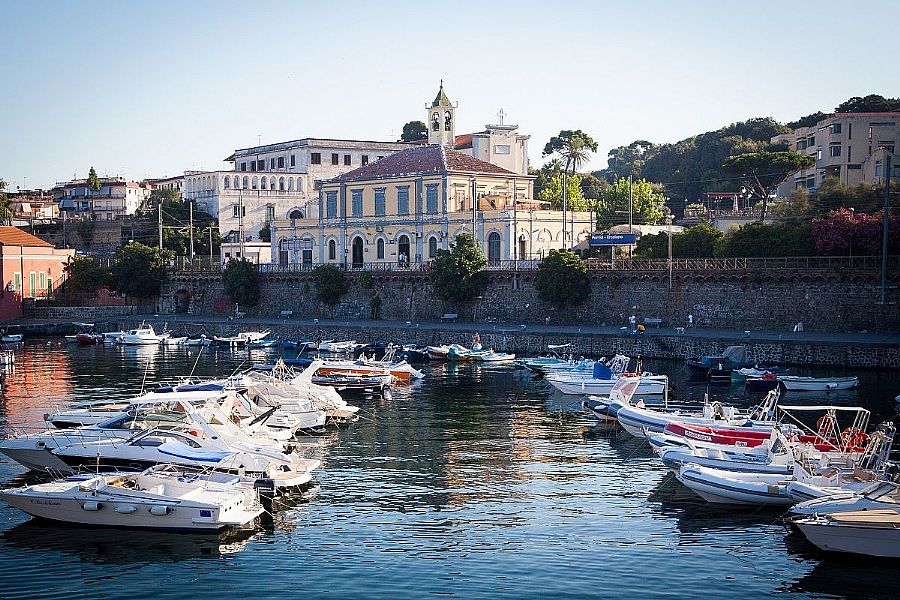Caserta

The city of Caserta is synonymous with the royal palace that is situated there, an opulent estate that matched the splendor of Versailles. But Caserta is a city in its own right, one that has had human habitation since the ancient Samnite tribes settled here thousands of years ago. The Romans then took over, and following the fall of the empire, the Longobards. In the Middle Ages, Caserta Vecchia was established on the hill by the bishop. The old town lost importance when the Reggia (Royal Palace) was built below. (But Caserta Vecchia is a charming town of characteristic lanes that should also be visited.)
The territory was fought over, vied for by the rulers of Capua, Salerno and Napoli. When King Charles III, ruler of the Kingdom of Naples, wanted a retreat and headquarters further inland, away from the more easily accessible port of Napoli, he built a sprawling and impressive palazzo with miles of property and elaborately tended gardens, with fanciful and monumental fountains.
King Ferdinand IV wanted to extend the village to include his vision of a worker's utopia combined with his important silk production facility, as well as a royal residence annex at San Leucio. This monumental complex is open and interesting to see, with the silk factory and the homes constructed for the families along with a belvedere overlook. The Museo della Seta (Silk Museum) is located here, and a Palio della Seta festival is held annually.
Caserta was bombed in WWII, then completely rebuilt. The perfect symmetry of the streets, however, that repeats the structure of the ancient Roman cities and the enlightenment city's concept, will capture your attention and your heart.
Apart from the Royal Palace of Caserta, you should wander around the old town center nearby and visit:
- the Duomo (XIX century), a lovely church that preserves many works of art
- The Monument dedicated to Luigi Vanvitelli, the painter-turned-architect whose grand masterpiece was the Reggia Royal Palace, and the massive aqueduct nearby, Aquedotto Carolino, but who also contributed to St. Peter's Basilica, and many churches and buildings in the Marche region. The marble statue rests on a base inlaid with bronze panels embossed in bas relief depicting Vanvitelli's most important works. The monument is in the tree-lined Piazza Vanvitelli, a nice spot to relax.
- Church of St Sebastiano (planned by Vanvitelli) a single nave church. The atrium guards a very interesting painting dated back to the second half of XVII century, also belonged to the Church of St Elena.
- The Modern Art Museum gives you a glimpse of vibrant southern Italy modern art while taking a break from the copious masterpieces and religious art. It is in the Complex of San Leucio.
Ask our staff about self-catering homes in Campania.

 Amalfi Coast
Amalfi Coast Sorrento Coast
Sorrento Coast Tuscany
Tuscany Cilento National Park
Cilento National Park Lake Como
Lake Como Rome and Latium
Rome and Latium Umbria
Umbria Capri and Ischia
Capri and Ischia Venice
Venice Puglia (Apulia)
Puglia (Apulia) Liguria
Liguria Sicily
Sicily Lake Maggiore
Lake Maggiore Lombardy
Lombardy Sardinia
Sardinia Lake Garda
Lake Garda Abruzzo and Marche
Abruzzo and Marche Calabria
Calabria

